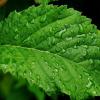Skal dere ta vaksinen for Covid-19?
389 stemmer
-
1. Skal dere ta vaksinen for covid-19?
-
Ja, uten forbehold197
-
Nei75
-
Ja, men med forbehold81
-
Vet ikke36
-
- Vennligst logg inn eller registrer deg for å stemme i meningsmålingen.
-
Populær nå
-
- 819 svar
- 35 953 visninger
-
- 2 841 svar
- 129 016 visninger
-
- 16 057 svar
- 786 056 visninger
-
-
Hvem er aktive 0 medlemmer
- Ingen innloggede medlemmer aktive



Anbefalte innlegg
Opprett en konto eller logg inn for å kommentere
Du må være et medlem for å kunne skrive en kommentar
Opprett konto
Det er enkelt å melde seg inn for å starte en ny konto!
Start en kontoLogg inn
Har du allerede en konto? Logg inn her.
Logg inn nå